Chapter 24 SCALAR OR DOT PRODUCT
Class 12th Maths R D Sharma Solution
Access Answers for Rd Sharma Solution Class 12 Maths Chapter 24 Exercise 1
Exercise 24.1
1.
(i) Solution:
Given,
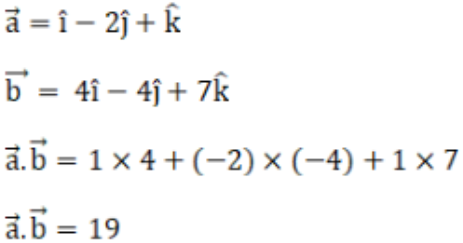
Hence, the dot product is 19.
(ii) Solution:
Given,
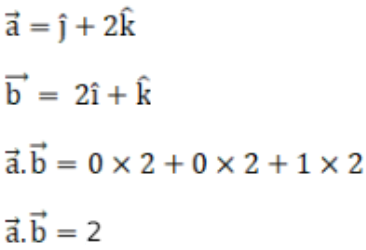
Hence, the dot product is 2.
(iii) Solution:
Given,
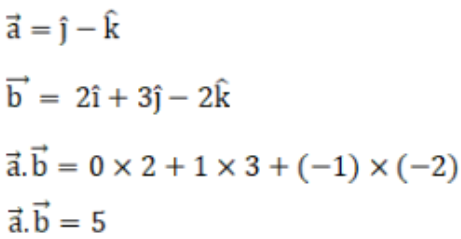
Hence, the dot product is 5.
2.
(i) Solution:
Given,
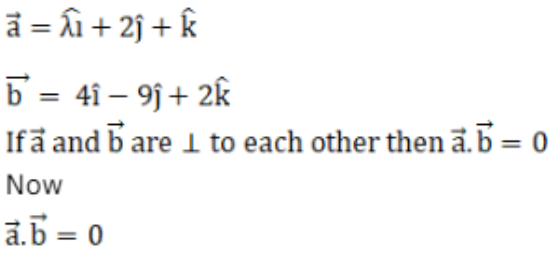
λ (4) + 2 (-9) + 1 (2) = 0
4λ – 18 + 2 = 0
4λ – 16 = 0
4λ = 16
λ = 16/4
∴ λ = 4
(ii) Solution:
Given,
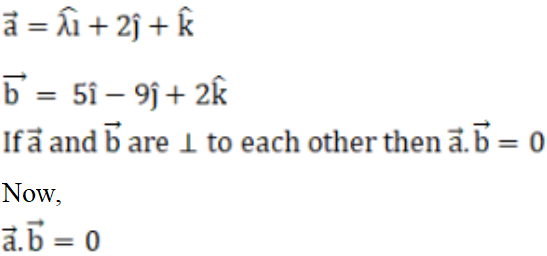
λ (5) + 2 (-9) + 1 (2) = 0
5λ – 18 + 2 = 0
5λ – 16 = 0
5λ = 16
∴ λ = 16/5
(iii) Solution:
Given,
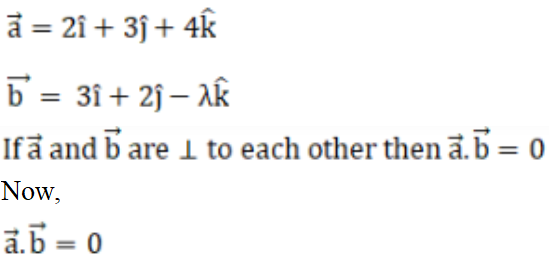
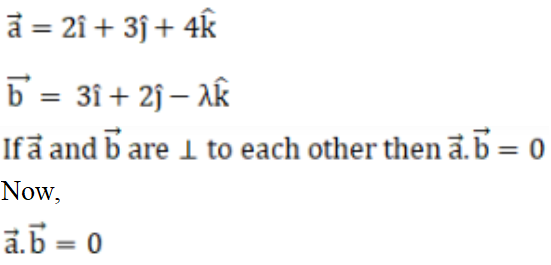
2 (3) + 3 (2) + 4 (-λ) = 0
-4λ + 6 + 6 = 0
-4λ + 12 = 0
-4λ = -12
λ = -12/-4
∴ λ = 3
(iv) Solution:
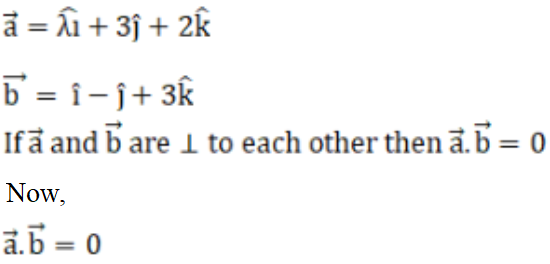
λ (1) + 3 (-1) + 2 (3) = 0
λ – 3 + 6 = 0
λ + 3 = 0
∴ λ = -3
3. Solution:
Given,
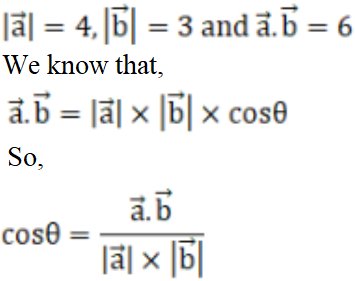
= 6/(4 x 3)
= 6/12
= ½
θ = cos-1 (½)
∴ θ = π/3
4. Solution:
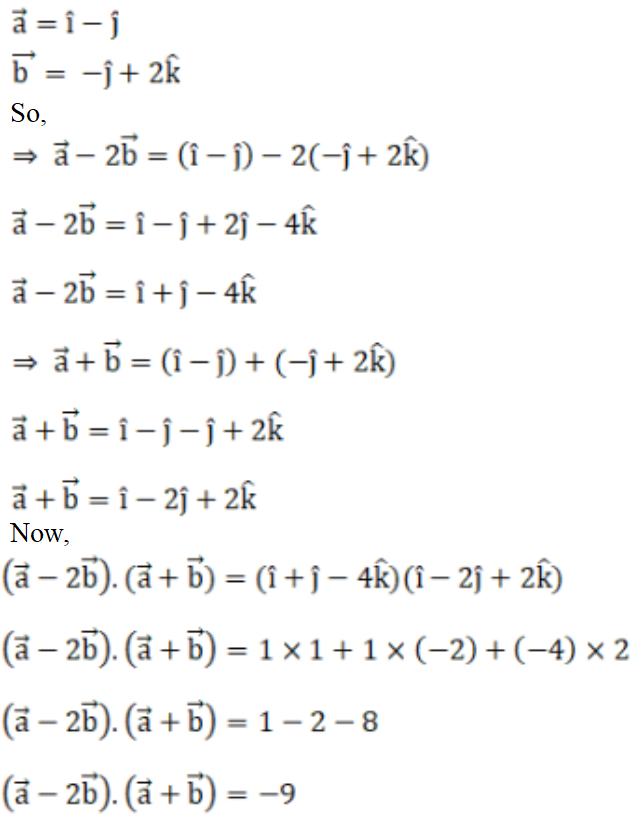
5.
(i) Solution:
Given,
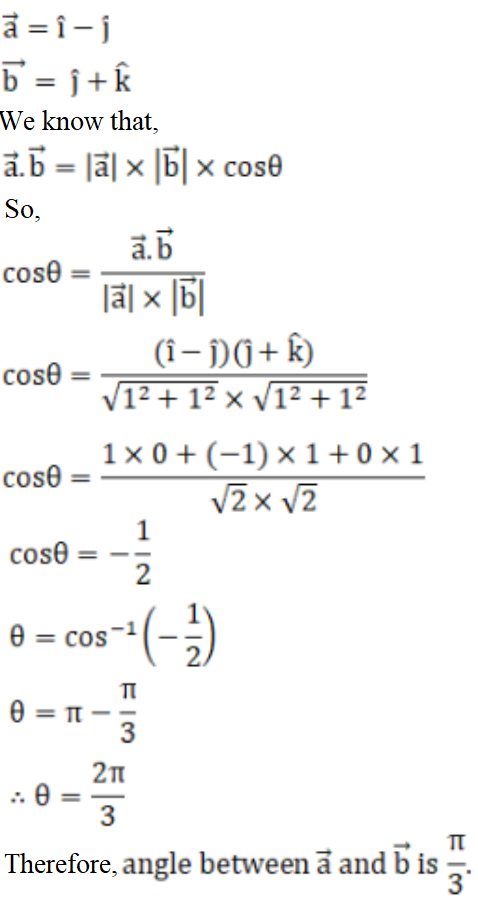
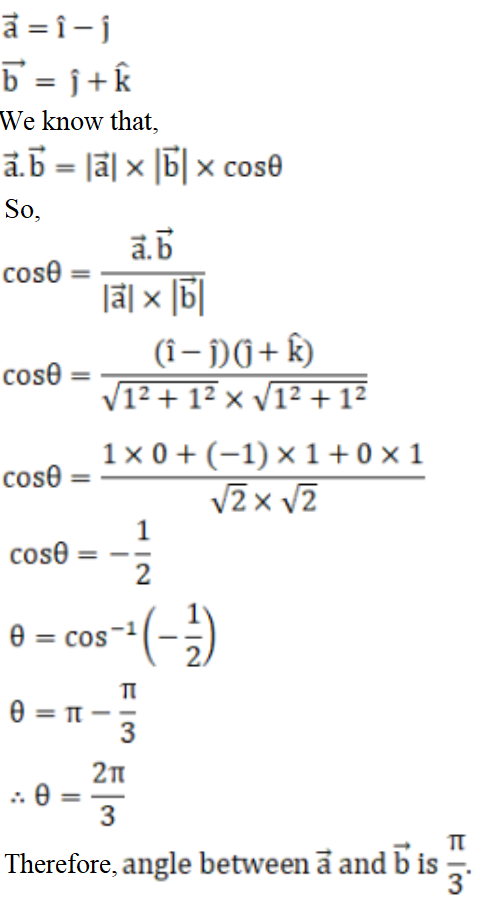
(ii) Solution:
Given,
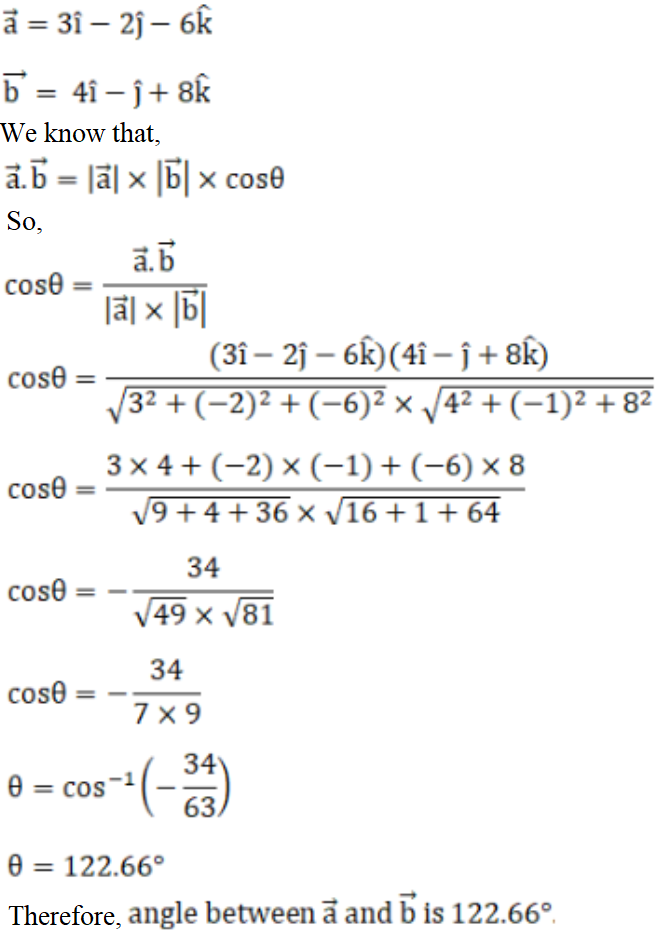
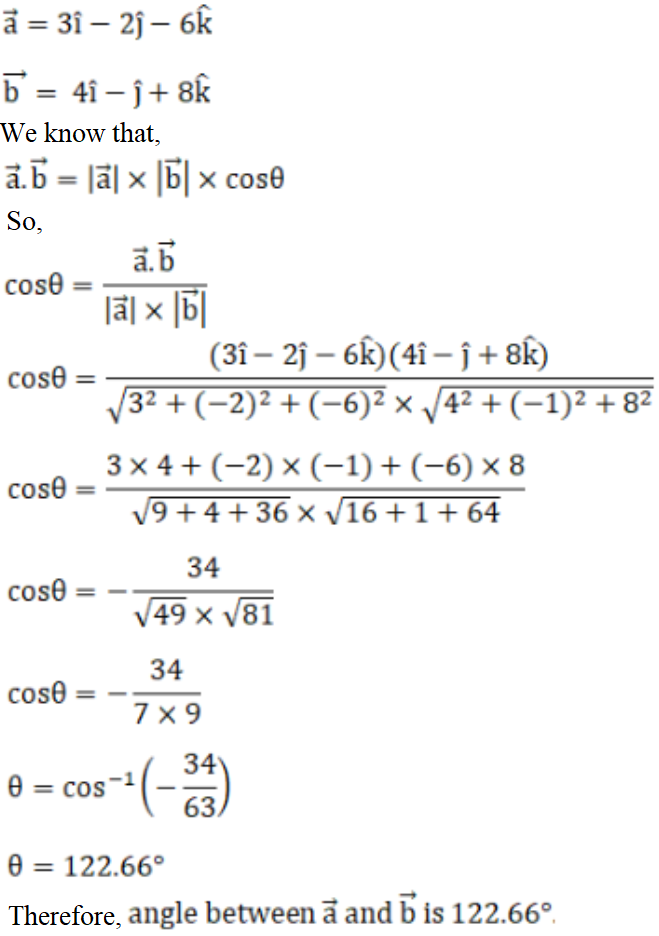
Access Answers for Rd Sharma Solution Class 12 Maths Chapter 24 Exercise 2
Exercise 24.2
1. Solution:
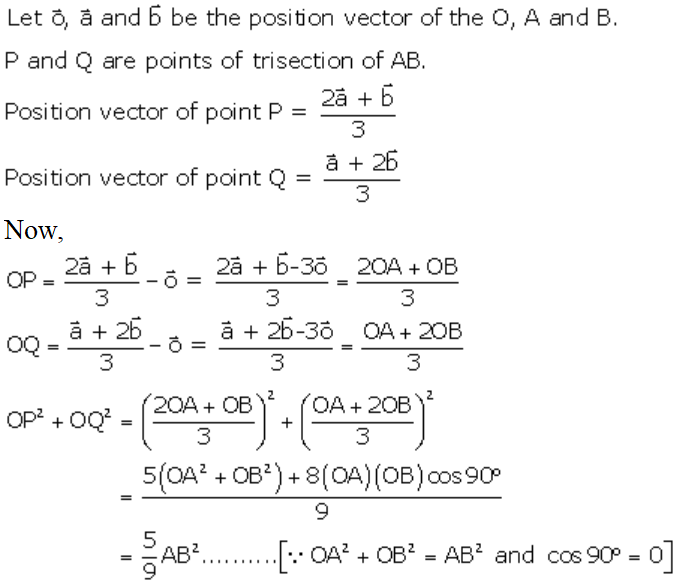
∴ OP2 + OQ2 = 5/9 AB2
2. Solution:
Let OACB be a quadrilateral such that its diagonal bisect each other at right angles.
We know that, if the diagonals of a quadrilateral bisect each other, then it’s a parallelogram.
Thus, OACB is a parallelogram
So,
OA = BC and OB = AC
Now,
Taking O as the origin. Let be
the position vector of A and B
be
the position vector of A and B
AB and OC be the diagonals of a quadrilateral, which bisect each other at right angles.
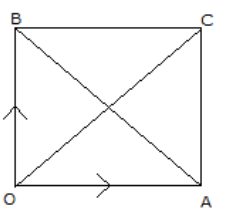
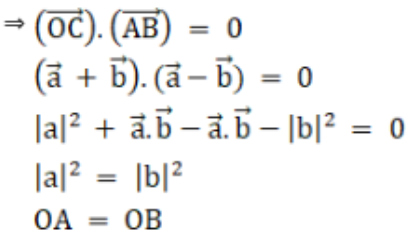
Similarly,
OA = OB = BC = CA
Therefore, OACB is a rhombus.
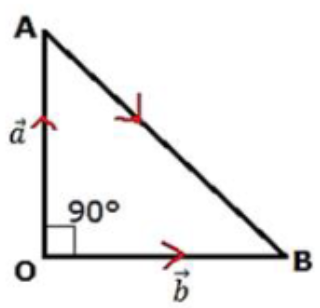 3.
Solution:
3.
Solution:
Let ∆AOB be a right-angle triangle with right angle at O.
Required to prove: AB2 = OA2 + OB2
Taking O as the origin, we have

to be the position vector of A and B, respectively.
Now, as OB is perpendicular to OA, their dot product equals zero
So, we have

And,
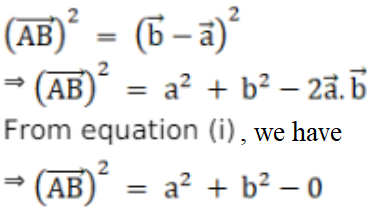
Therefore,
AB2 = OA2 + OB2
- Hence proved
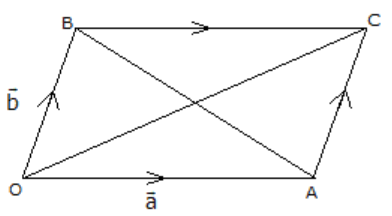 4.
Solution:
4.
Solution:
Let OAC be a right triangle, right-angled at O.
Now, taking O as the origin
Let be
the position vector of
be
the position vector of .
.

- Hence proved
5. Solution:
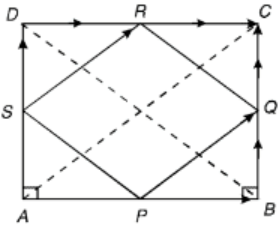
Given, ABCD is a rectangle
Let P, Q, R and S be the midpoints of the sides AB, BC, CD and DA, respectively.
Now,
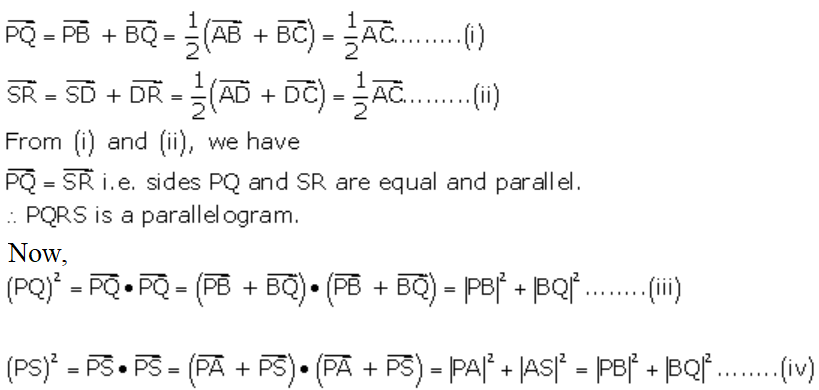
From (iii) and (iv), we get
(PQ)2 = (PS)2
⇒ PQ = PS
So, the adjacent sides of PQRS are equal
Hence, PQRS is a rhombus.
6. Solution:
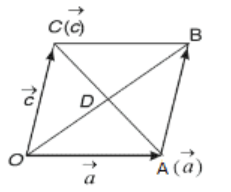
Let OABC be a rhombus whose diagonals OB and AC intersect at point D
And let O be the origin
Let the position vector of A and C be respectively
then,
respectively
then,
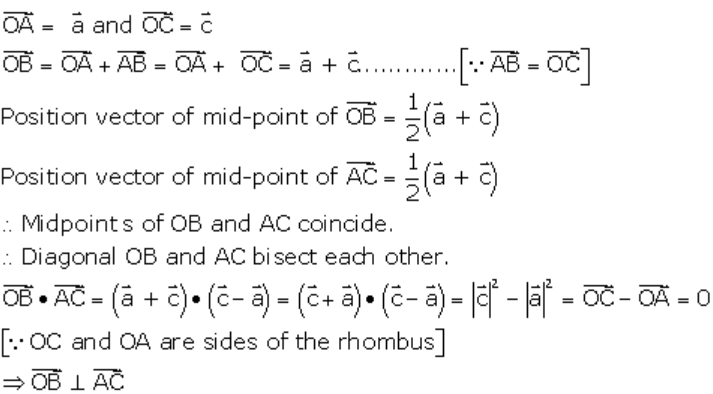
7. Solution:
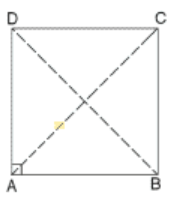
Let ABCD be a rectangle
Taking A as the origin, we have position vectors of points B and D to
be respectively
respectively
By parallelogram law,
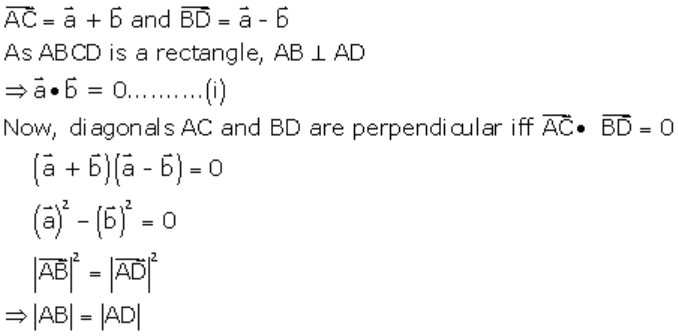
Hence, ABCD is a square.